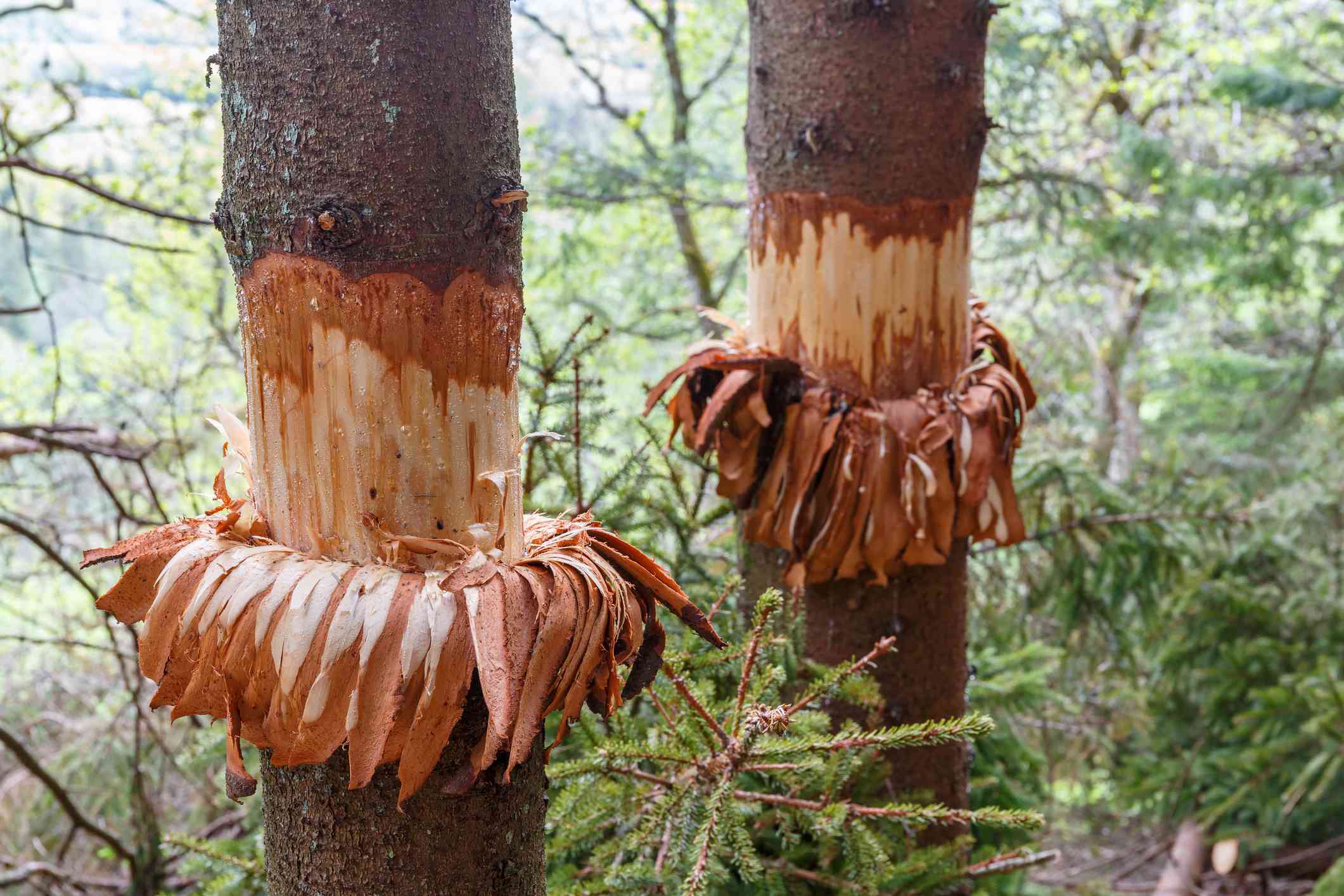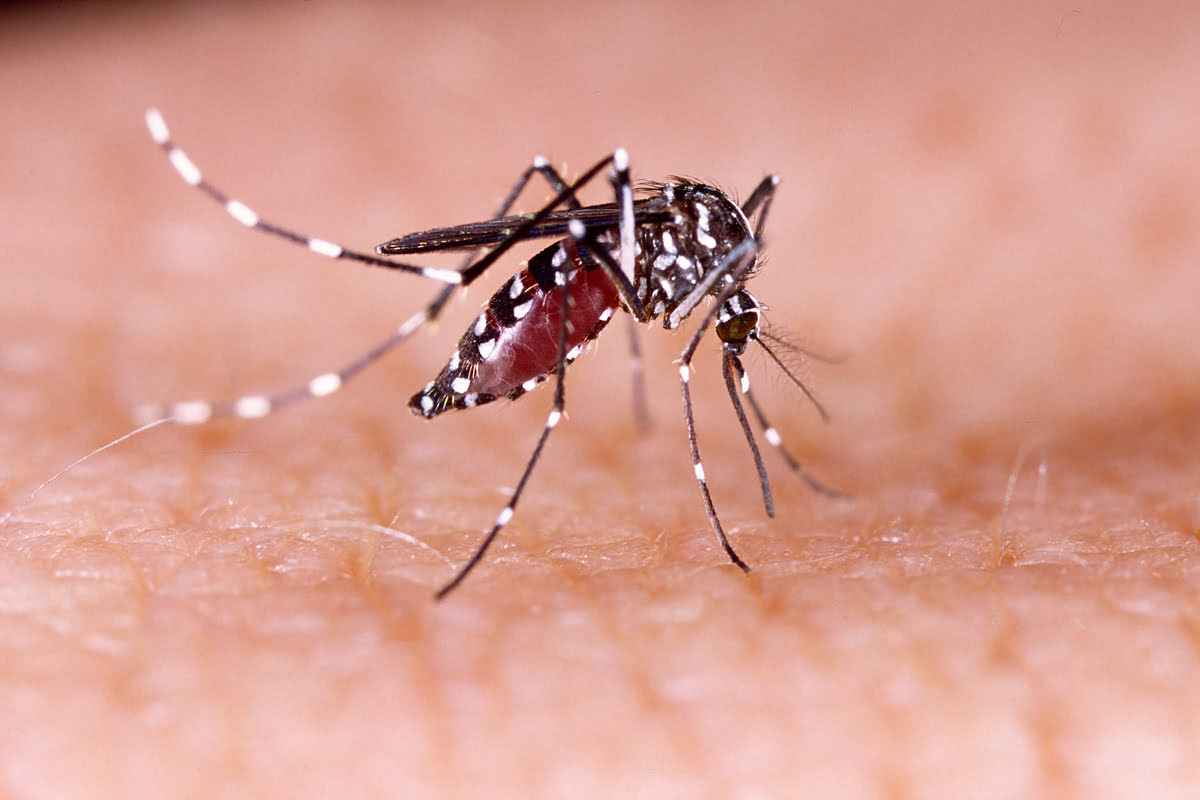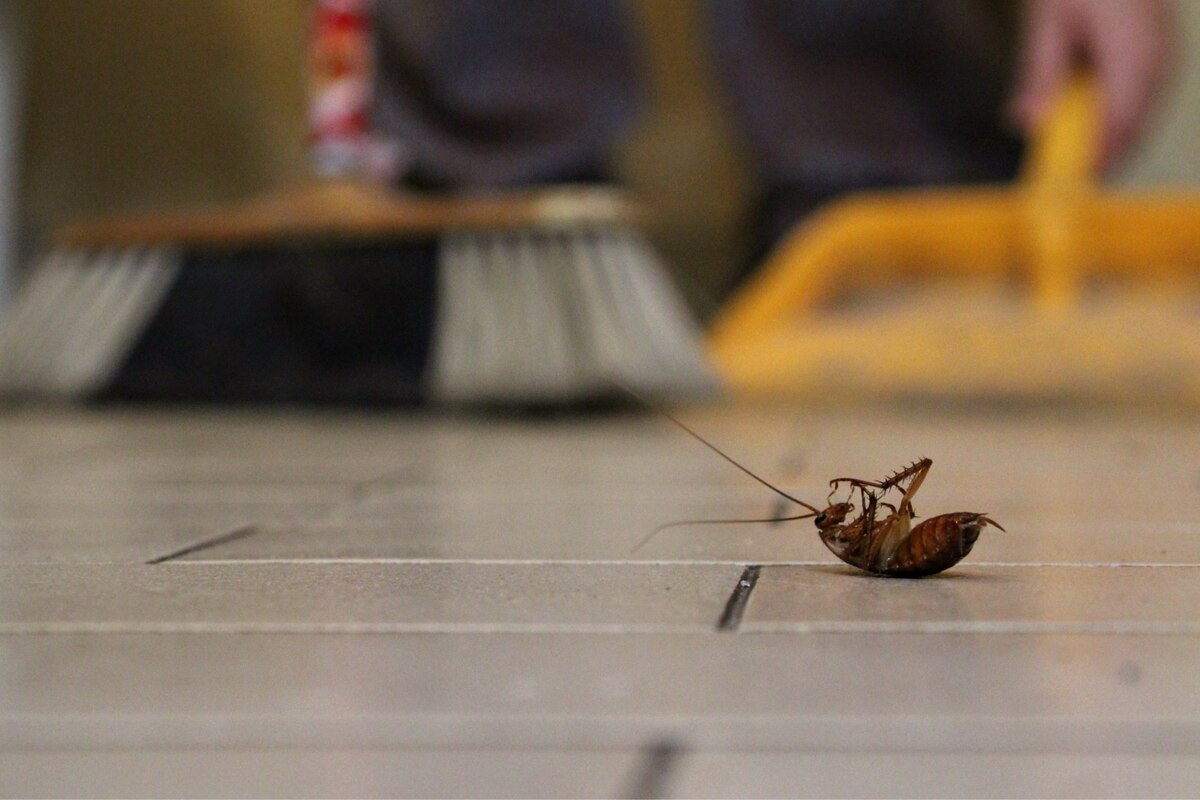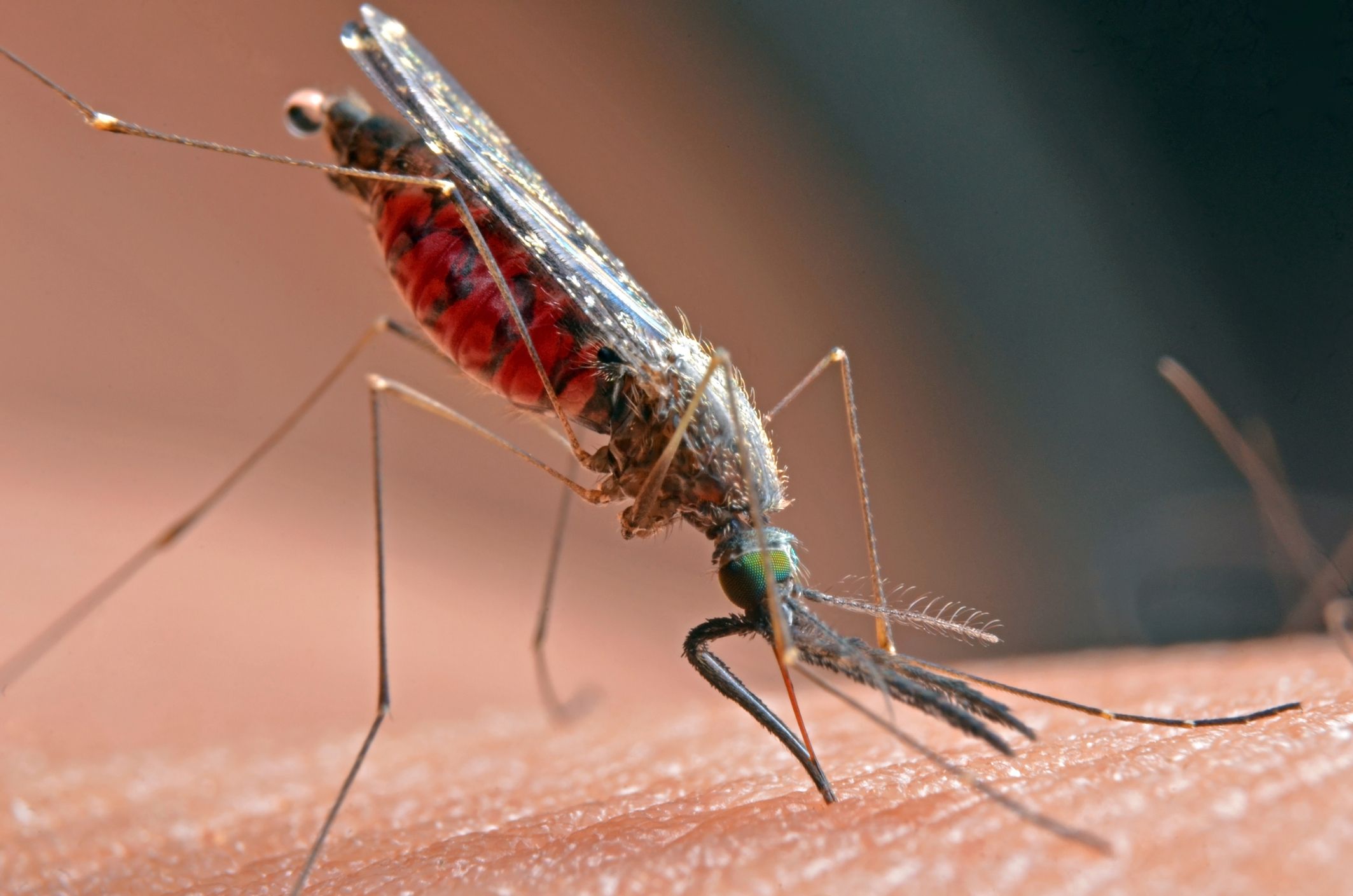Home>Gardening Tips and Tricks>Problem Solving>What Kills Trees Quickly


Problem Solving
What Kills Trees Quickly
Modified: January 22, 2024
Looking for problem solving tips to save your trees? Discover what kills trees quickly and learn effective solutions to protect your precious greenery.
(Many of the links in this article redirect to a specific reviewed product. Your purchase of these products through affiliate links helps to generate commission for Chicagolandgardening.com, at no extra cost. Learn more)
Table of Contents
Introduction
Trees are invaluable to our environment, providing oxygen, shade, and beauty to our surroundings. As living organisms, trees, like any other plants, are susceptible to various factors that can lead to their demise. Understanding what kills trees quickly can help us prevent and address these issues to ensure the health and longevity of our beloved trees.
While trees are generally resilient, they can succumb to a range of threats that hinder their ability to thrive. These threats include natural causes, such as lack of water and disease, as well as human-made factors like environmental pollution and improper maintenance. By identifying these factors, we can take proactive steps to protect our trees and ensure their survival.
This article will explore several common reasons why trees die quickly, including lack of water, disease and infections, pest infestations, environmental factors, physical damage, chemical exposure, and improper pruning and maintenance. By understanding these factors, we can take the necessary measures to preserve and protect our trees from their untimely demise.
Lack of Water
One of the primary reasons why trees can die quickly is due to a lack of water. Trees need a consistent and adequate supply of water to maintain their health and vitality. When trees do not receive enough water, they can become stressed, leading to wilted leaves, stunted growth, and ultimately, death.
Drought conditions, lack of rainfall, or improper irrigation practices can contribute to a tree’s lack of water. Additionally, competition from surrounding plants or excessive evaporation from nearby structures can also impact the availability of water for trees.
Proper watering is essential for tree health. Adequate watering involves providing enough water to penetrate the tree’s root zone, ensuring that the water reaches the tree’s roots where it is needed most. The frequency and amount of water required will depend on various factors, such as the tree species, soil type, and weather conditions.
It is important to note that overwatering can be just as detrimental to a tree as underwatering. Excessive moisture can lead to root rot and create a favorable environment for fungal infections. Therefore, striking a balance and implementing efficient watering practices is crucial to prevent the rapid death of trees due to water-related issues.
To ensure sufficient water supply for trees, consider the following measures:
- Monitor weather conditions and adjust watering schedules accordingly.
- Use mulch around the base of the tree to retain soil moisture and prevent evaporation.
- Install irrigation systems with drip emitters that deliver water directly to the tree’s root zone.
- Regularly check soil moisture levels and adjust watering as needed.
By prioritizing proper watering techniques, we can significantly reduce the risk of trees dying quickly due to a lack of water.
Disease and Infections
Disease and infections can quickly take a toll on trees, causing rapid deterioration and eventual death. Trees are susceptible to a wide range of pathogens, including bacteria, viruses, fungi, and other microorganisms. These pathogens can enter a tree through wounds or natural openings, such as leaf stomata or bark cracks, compromising the tree’s immune system and leading to various diseases.
Common tree diseases include Dutch elm disease, oak wilt, chestnut blight, and various fungal infections like powdery mildew and root rot. These diseases can spread quickly, especially in conditions of high humidity, warm temperatures, and poor air circulation.
One of the key factors in combating tree diseases and infections is early detection. Regular inspections of trees for signs of discoloration, wilting leaves, cankers, or unusual growth patterns can help identify and treat diseases before they become severe. If a tree is suspected of having a disease, it is crucial to consult with a certified arborist or tree healthcare professional to properly diagnose and provide appropriate treatment.
Treatment options for tree diseases may include pruning infected branches, applying fungicides or bactericides, improving tree nutrition, or implementing cultural practices that promote tree health and resistance to disease. In some cases, removing severely infected trees might be necessary to prevent further spread to nearby trees.
Prevention is also key in mitigating the risk of tree disease and infection. Some preventative measures include:
- Maintaining proper tree care, including regular pruning and removal of dead or diseased branches.
- Avoiding unnecessary wounds to trees, such as improper pruning cuts or injury from lawn equipment.
- Promoting overall tree health through adequate watering, fertilization, and proper mulching.
- Choosing tree species that are disease-resistant and well-adapted to the local climate and conditions.
- Practicing good sanitation by promptly removing and disposing of fallen leaves, fruits, and other debris that may harbor pathogens.
By being vigilant, proactive, and implementing appropriate measures, we can protect trees from diseases and infections, ensuring their longevity and preventing their demise.
Pest Infestation
Pest infestation is another significant threat that can quickly lead to the decline and death of trees. Insects, mites, and other pests can cause severe damage to trees by feeding on leaves, bark, or wood, disrupting the tree’s ability to photosynthesize and transport nutrients.
Common tree pests include aphids, scales, beetles, caterpillars, and borers. These pests can weaken and stress trees, making them more susceptible to diseases and environmental stressors. In some cases, pest infestations can be so severe that they directly cause the death of the tree.
Early detection is vital in managing and mitigating pest infestations. Regularly inspecting trees for signs of pest activity, such as leaf discoloration, abnormal growth, or the presence of pests themselves, can help identify and address infestations in their early stages.
Treatment options for pest infestations will depend on the specific pest and the severity of the infestation. Some common approaches include:
- Biological control: Introducing natural predators or parasites of the pest to limit their population growth.
- Chemical control: Applying insecticides or pesticides to treat the infested tree or surrounding areas.
- Cultural control: Implementing practices that promote tree health and vitality, making them less susceptible to pests.
- Physical control: Removing and destroying infested branches or using physical barriers to prevent pests from reaching the tree.
Prevention is key in managing pest infestations. Some preventative measures include:
- Maintaining overall tree health through proper watering, fertilization, and pruning.
- Removing dead or decaying wood, which can attract pests.
- Using mulch to suppress weed growth and create a barrier between pests and the tree.
- Planting pest-resistant tree species and avoiding monoculture planting, which can attract specific pests.
- Regularly monitoring the health of trees and promptly addressing any signs of pest activity.
By being proactive in pest management and implementing appropriate control measures, we can prevent the rapid death of trees due to pest infestations and preserve their beauty and ecological value.
Environmental Factors
Environmental factors play a significant role in the health and survival of trees. Trees are sensitive to changes in their surroundings, and exposure to adverse conditions can quickly lead to their demise. Understanding and mitigating the impact of these environmental factors is crucial in protecting our trees.
Extreme temperatures, both hot and cold, can put stress on trees and hinder their ability to survive. Prolonged periods of drought or excessive moisture can severely impact tree health. In regions with high humidity or poor air circulation, fungal infections can thrive and quickly spread, causing substantial damage to trees.
Air pollution, including pollutants such as sulfur dioxide, ozone, and particulate matter, can have a detrimental effect on trees. These pollutants can impair photosynthesis, cause leaf discoloration, and weaken trees’ immune systems, making them more susceptible to diseases and pest infestations.
Soil conditions also play a crucial role in tree health. Soil compaction, improper drainage, or contaminated soil can restrict root development and nutrient uptake, leading to nutrient deficiencies and overall stress on the tree.
Proper care and mitigation strategies can help trees withstand and adapt to these environmental challenges:
- Watering trees during drought conditions and ensuring proper drainage to prevent waterlogging.
- Implementing measures to reduce air pollution, such as controlling emissions and promoting green spaces in urban areas.
- Improving soil quality through aeration, proper mulching, and adding organic matter to enhance nutrient availability.
- Selecting tree species that are well-suited to local environmental conditions and planting them in appropriate locations.
- Providing supplemental support, such as tree staking or windbreaks, in areas prone to strong winds or storms.
By understanding and addressing these environmental factors, we can create a more suitable and supportive environment for trees to thrive, reducing the risk of their rapid decline and death.
Physical Damage
Physical damage is a significant threat to the survival of trees. Unfortunately, trees can sustain physical damage from a variety of sources, including severe weather events, human activities, and wildlife.
Extreme weather conditions, such as strong winds, heavy snowfall, or ice storms, can cause branches to break or even uproot entire trees. Lightning strikes can also result in severe damage or destruction. Additionally, hailstorms can cause significant harm to tree foliage and bark, leaving them vulnerable to pests and diseases.
Human activities can also cause physical damage to trees. Accidental impacts from construction equipment, improper pruning techniques, or tree removal without professional assistance can cause irreparable harm to trees. Soil compaction due to heavy machinery or foot traffic can also limit root growth and nutrient uptake.
Wildlife, such as deer, rabbits, or rodents, can cause damage to trees by chewing on bark or branches. This can create openings for pests and diseases to invade the tree, leading to its rapid decline.
Addressing physical damage promptly is crucial to prevent further deterioration and increase a tree’s chances of survival:
- After severe weather events, assess trees for any visible damage, such as broken branches or leaning trunks. Consult with a certified arborist to determine the best course of action.
- When undertaking construction or landscaping projects near trees, take precautions to protect the trees from damage. Implement barriers or fencing to ensure equipment and workers do not cause harm to the trees.
- Pruning trees should be done following arboricultural standards to avoid unnecessary damage. If unsure, consult a professional tree care service to ensure proper pruning techniques are applied.
- Creating physical barriers around young or vulnerable trees can deter wildlife from causing damage. Use tree guards or fencing to protect the base of the tree from nibbling animals.
By being proactive in preventing physical damage and addressing it promptly when it does occur, we can protect our trees from rapid deterioration and ensure their long-term survival.
Chemical Exposure
Chemical exposure is a significant threat to trees, as certain chemicals can have detrimental effects on their health and survival. Trees can be exposed to chemicals through various means, including herbicides, pesticides, pollutants, and improper use of fertilizers.
Herbicides and pesticides are commonly used to control weeds or pests in agriculture or landscaping. However, if not applied correctly or used in excessive amounts, these chemicals can have unintended consequences for trees. Direct or indirect contact with herbicides and pesticides can lead to leaf discoloration, stunted growth, and even death in severe cases.
Pollutants in the air, soil, or water can also negatively affect trees. Industrial emissions, vehicle exhaust, and chemical spills can release harmful pollutants that are absorbed by trees through their leaves and roots. These pollutants can disrupt the tree’s physiological processes, impair photosynthesis, and weaken their immune systems, making them more susceptible to diseases and pests.
Improper use of fertilizers can also harm trees. Overapplication of fertilizer can lead to nutrient imbalances, salt accumulation in the soil, and root burn. These conditions can inhibit root growth, impair nutrient uptake, and ultimately impact the overall health and vitality of the tree.
To protect trees from chemical exposure, it is essential to follow responsible practices:
- Read and follow the instructions and guidelines provided with herbicides and pesticides to ensure proper usage and application.
- Avoid spraying chemicals near trees or in areas where drift can occur.
- Limit the use of synthetic chemicals and opt for organic or environmentally friendly alternatives whenever possible.
- Regularly monitor air, soil, and water quality and address any pollution sources promptly.
- Follow recommended fertilization practices, including conducting soil tests and applying fertilizers in appropriate amounts and at the right time.
By being judicious in the use of chemicals and taking measures to minimize or eliminate chemical exposure, we can safeguard the health and well-being of our trees.
Improper Pruning and Maintenance
Improper pruning and maintenance practices can have severe repercussions on the health and longevity of trees. Pruning, when done correctly, can promote healthy growth and structural integrity. However, improper pruning techniques can cause irreparable damage and even lead to the death of a tree.
One common mistake is over-pruning or “topping” trees. Topping involves indiscriminately removing large portions of a tree’s canopy, which can weaken the tree and leave it more prone to disease, pests, and environmental stressors. Topping not only compromises the aesthetics of the tree but also disrupts its natural growth pattern and nutrient distribution.
Other pruning mistakes include excessive or improper pruning cuts, which can create wounds that are slow to heal, making the tree susceptible to infections and decay. Improper pruning practices, such as topping or incorrect angle cuts, can also lead to weak branch attachments, increasing the risk of branch failure during storms or high winds.
Maintenance practices beyond pruning can also impact tree health. Neglecting to properly water and fertilize trees can result in nutrient deficiencies and water stress, predisposing them to disease and pest issues. Failure to remove dead branches or address structural weaknesses can also create safety hazards.
Professional arborists or tree care specialists are trained to follow industry standards when it comes to pruning and maintenance. Hiring a knowledgeable and certified professional can ensure that pruning is done correctly, considering the specific tree species, growth habits, and desired outcome.
Maintaining trees properly involves taking the following steps:
- Pruning trees at the right time of year and following proper techniques, such as making clean cuts just outside the branch collar.
- Avoiding topping or excessive removal of branches unless necessary for tree health or safety reasons.
- Regularly inspecting and addressing any signs of disease, pest infestations, or structural weaknesses.
- Providing proper watering, fertilization, and mulching to support tree health and growth.
- Consulting with certified arborists or tree care professionals for guidance on tree care and maintenance.
By adhering to proper pruning and maintenance practices, we can ensure the well-being of our trees, prolong their lifespan, and maintain the beauty and benefits they bring to our surroundings.
Conclusion
Trees are invaluable assets to our environment, and understanding the factors that can lead to their rapid demise is crucial in preserving their health and longevity. Lack of water, disease and infections, pest infestations, environmental factors, physical damage, chemical exposure, and improper pruning and maintenance practices are all significant threats that can quickly kill trees.
By recognizing these threats and taking proactive measures, we can protect our trees from these risks. Providing adequate water, monitoring tree health, and implementing appropriate pest control measures are essential in ensuring the survival of our trees. Additionally, considering environmental conditions, avoiding physical damage, and adhering to proper pruning techniques are crucial in maintaining the structural integrity and well-being of trees.
Seeking guidance from certified arborists or tree care professionals can provide valuable insights and assistance in tree care and maintenance. Their expertise can help identify and address potential issues early on, significantly increasing the chances of tree survival.
Preserving and protecting trees benefits not only the individual specimens but also the community and the environment as a whole. Trees provide shade, clean air, and habitat for wildlife, making our surroundings more pleasant and sustainable. Taking care of trees ensures their longevity, enabling future generations to enjoy their numerous benefits.
Let us remain vigilant in our efforts to safeguard trees and take the necessary steps to prevent their rapid decline and death. By doing so, we can ensure that trees continue to enhance our lives and the environment for years to come.





